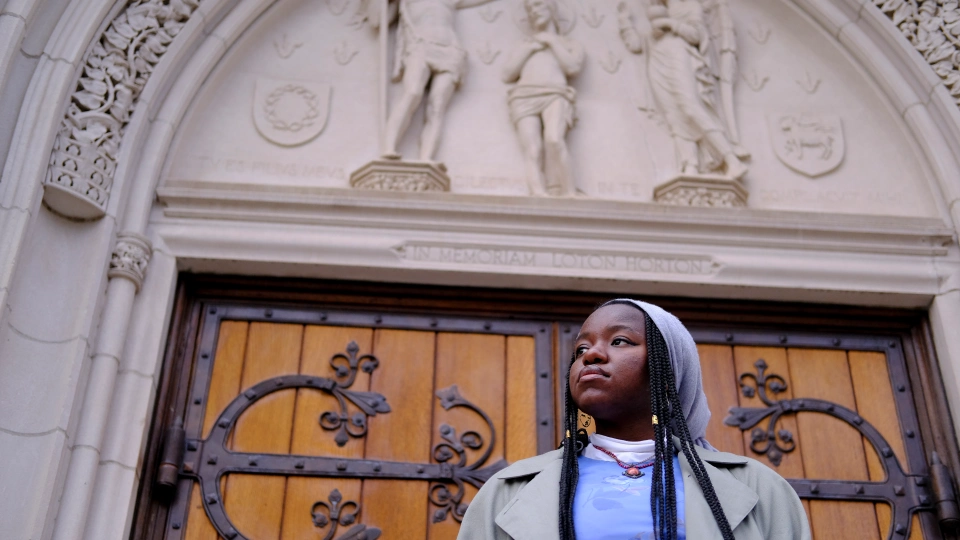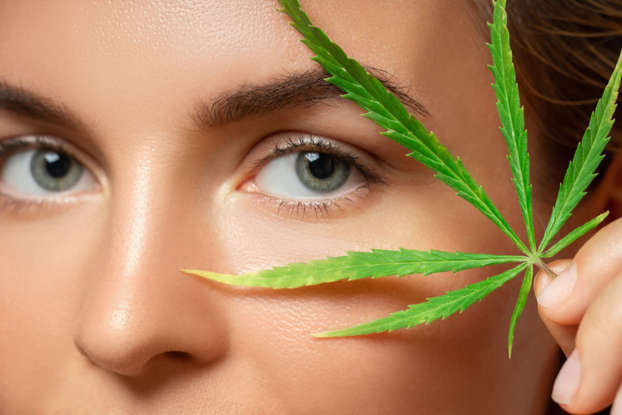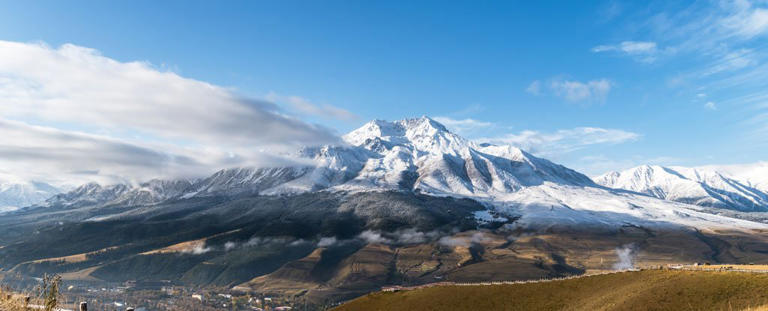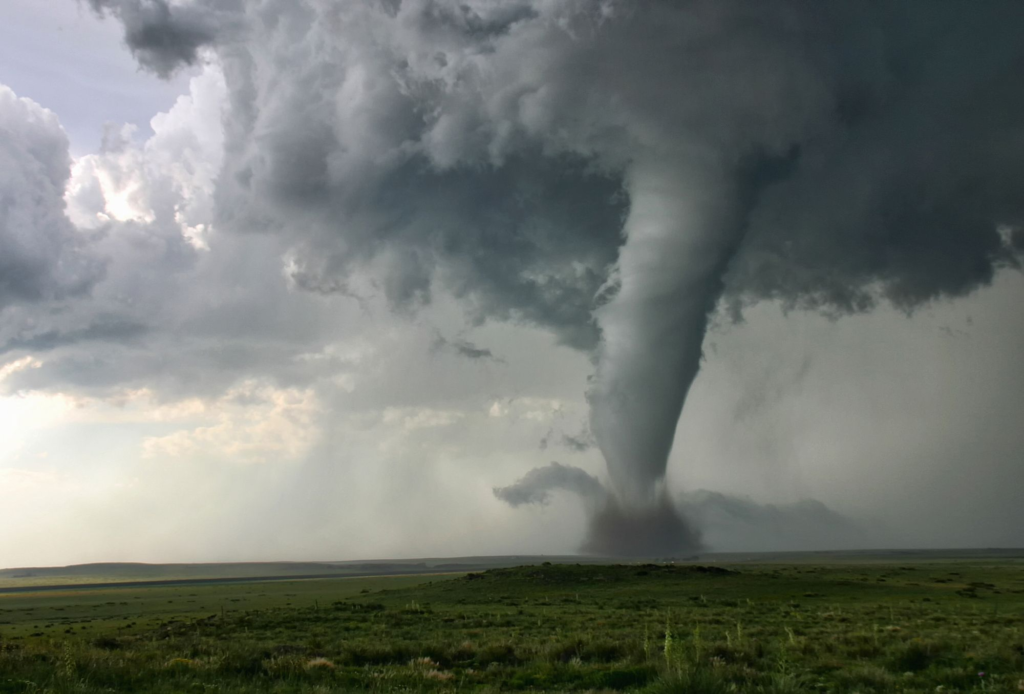
PACIFIC PALISADES, Calif. – Ten times he has teed it up at Riviera, including his very first start in a PGA TOUR event as a 16-year-old amateur in 1992.
Ten times he has gone home empty.
For Tiger Woods, that’s the most starts he has made on a single course on the PGA TOUR without a win. It’s an odd footnote in a career that includes 79 TOUR wins – and made even more perplexing given his Southern California roots and affinity for this historic layout. “I love the golf course, I love the layout, it fits my eye – and I play awful. It’s very simple,” Woods said Tuesday while prepping for this week’s Genesis Open.
“It’s just one of those weird things.”
To be fair, Tiger’s definition of “awful” is different from how the rest of us might perceive it. His track record certainly is not bad – a tie for second in 1999 and six other top-20 finishes in those 10 starts at The Riv. (Incidentally, his best finish in this event came in 1998 when he lost in a playoff to Billy Mayfair at Valencia Country Club.) The only times he’s missed the cut at Riviera was his two amateur starts in 1992-93.
He also had to withdraw after 36 holes in his last appearance in 2006 because of the flu. Prior to that 2006 start, he told the media that he would “be seriously upset if I went my whole career and never won this tournament. It’s one of the oldest events on our TOUR, it’s played every year on one of our best courses. It always attracts a strong field.
“These are exactly the tournaments you want to win.”
And yet it took him 12 years to return to The Riv. It’s a tight course that generally favors shot-makers – it is, after all, one of Hogan’s Alleys, along with Colonial in Fort Worth, a course that Woods has not played since 1997. But Woods insisted Tuesday that his prolonged absence had nothing to do with the layout. “This is a whole new game – everything’s bigger now,” he said. “The bunkers are deeper; they seem to be bigger. The greens have gotten more pin locations than I remember.
“I forgot how much tug there is down towards the ocean,” Woods said. “A couple putts I hit just in a practice round here, I misread probably about three or four of them. I forgot how much it tugs. So those are some of the things I’ve got to remember about this event and this golf course.” And even Tiger admits his measure of success is not solely based on winning, at least not right now.
Tiger crashed on his way to Riviera Golf Course –
Tiger Woods suffers multiple leg injuries in single-car crash.
Woods is in hospital after a horrific car crash yesterday,
Tiger Woods Injury Updates Surgeons Explain,
The golf legend was cut from the wreckage of his car and hauled out of the windscreen by firefighters. Woods’ injuries are not as serious as those sustained by Hogan – but they are serious enough.
Sportscaster Jim Gray reacts to Tiger Woods’ hospitalization after serious car crash.
After he was cut from the wreckage of his car and hauled out of the windscreen by firefighters, the 15-time Major champion underwent what was described on his Twitter feed as a ‘long surgical procedure on his lower right leg and ankle’. The most serious problem facing his surgeon, Dr Anish Mahajan was the fact that the fractures to his right leg were comminuted – which means the bones were broken in more than two pieces.
Dr Anish commented: “Comminuted open fractures affecting both the upper and lower portions of the tibia and fibula bones were stabilized by inserting a rod into the tibia. “Additional injuries to the bones of the foot and ankle were stabilized with a combination of screws and pins.”
That sounds ominous, especially as golfers place so much strain on their ankles through impact – and Woods has already had to overcome five back operations, the same number of knee ops, and a torn Achilles tendon. His latest operation – to remove a disc fragment from the area of the spine where he had two discs fused together in make-or-break surgery – was carried out just a few weeks ago.
Tiger Woods shows off his golf swing in a video following February car crash.
David Facey 8:02 ET, Feb 24, 2021, Updated: 14:08 ET, Feb 24, 2021.
IRON WILL Incredible story of Ben Hogan who cheated death in car crash similar to Tiger Woods before going on to win six majors
GOLF LOVERS will be hoping Tiger Woods can add to his ‘Iron Man’ status, and match the incredible recovery achieved by one of his boyhood idols, Ben Hogan.
Hogan the 15-time Major champion underwent surgery on his lower right leg and ankle Credit: The Mega Agency
But he came back from a shattered pelvis, busted ribs, a broken collarbone and near-fatal blood clots to win six more Majors, taking his total to nine.
Ben Hogan – Wikipedia Hogan was almost killed when his car was hit head-on by a Greyhounds bus in February 1949.
Tiger Woods will be hoping to take inspiration from his hero Ben Hogan (above) on his road to recovery. He came back from a shattered pelvis, busted ribs, a broken collarbone and near-fatal blood clots. Hogan went on to win six more Majors to take his tally to nine after his accident.
Ben Hogan’s recovery from his horrific 1949 car crash offers perspective into Tiger Woods’ future. By Dave Shedloski – Feb 26, 2021
(Original Caption) Golf champion Ben Hogan is lifted from a train which brought him to his hometown to recuperate from a near fatal auto accident. He was hospitalized in early February. All the while when Tiger Woods returned to the Masters in 2018 after a two-year absence because of chronic back problems, expectations for him still were remarkably high to the point that he had to interject in his pre-tournament interview, “I have four rounds to play, so let’s just slow down a bit.”
Tiger wasn’t biting. He could smell the hyperbole from the podium. Plus, he knows his golf history. So his response was definitive and dutifully respectful to a man who returned from a near-fatal automobile accident to win six of his nine career major championships, including the triple crown in 1953. He knows the story of Ben Hogan.
“I think that one of the greatest comebacks in all of sport is the gentleman who won here, Mr. Hogan,” Woods said. “I mean, he got hit by a bus and came back and won major championships. The pain he had to endure, the things he had to do just to play, the wrapping of the legs, all the hot tubs and just … how hard it was for him to walk, period. … That’s one of the greatest comebacks there is, and it happens to be in our sport.”
Woods understood that he hadn’t walked in Hogan’s shoes. But now, sadly, scarily, he faces a comeback equally daunting—or perhaps even more so—after suffering severe leg injuries in a one-car accident Tuesday in California. That Woods survived the horrific crash is something of a miracle, but then, the same could be said for Hogan.
MORE: Doctors offer insight into what’s next for Tiger Woods
It happened in the early morning hours of Feb. 2, 1949, Groundhog Day. On a fog-shrouded, ice-covered road 37 miles west of Van Horn, Texas, a Greyhound bus collided head-on with a recently purchased black Cadillac sedan carrying the sinewy Texan and his wife, Valerie. The couple was returning home to Fort Worth from Phoenix, where Hogan had lost a playoff to fellow Texan Jimmy Demaret. Indisputably, he was the top player in the game, having already won twice in January after a 10-win season in 1948 that included the money title and Vardon Trophy. In all, he had collected 37 titles since the end of World War II.
Because he had just begun to cross a small bridge on Highway 80, Hogan had no room to avert the oncoming 20,000-pound bus, which had just passed a truck and was still occupying the eastbound lane. Driving an estimated 25 mph because of the fog and ice, Hogan jerked the car as far to the right as he could and then dove across the body of his wife as the bus barreled down on them at close to 50 mph. That gesture of gallantry turned out to be a lifesaving move for both of them.
Valerie, who was protected by her husband from being ejected through the front windshield, sustained minor injuries. But Ben, the reigning U.S. Open and PGA champion, was hurt severely. He suffered a broken left ankle, contusions to his left leg, a broken collarbone, a cracked rib, a double fracture of the pelvis, a head abrasion and internal injuries. Even so, he escaped certain death, as the engine of his car had pushed into the steering column, which in turn was propelled through the driver’s seat.
It took an hour to extricate Hogan from the wreckage and 90 minutes before an ambulance arrived. In the confusion, no one had immediately called for assistance. “Ben couldn’t understand why no one was coming to help us,” Valerie said later. He complained most about the pain in his mangled left leg.
Initially, doctors weren’t certain Hogan would survive, and if he did, they couldn’t be sure he’d ever walk again. Returning to top-tier competitive golf seemed like an impossibility for the 1948 “Golfer of the Year,” the first man since Gene Sarazen in 1922 to win the national open and PGA Championship in the same year.
© Provided by Golf Digest Ben Hogan’s recovery from his horrific 1949 car crash offers perspective into Tiger Woods’ future
Ben Hogan spent 59 days in an El Paso hospital after the accident before returning to his home, surviving a scare a month into his recovery when a blood clot traveled to his lung.
MORE: Tiger Woods’ car crash adds cruel twist to unreal saga
He spent 59 days in an El Paso hospital, but a month into his stay,
Hogan took a turn for the worse when blood clots began to form in his left leg and one broke off and invaded his right lung. Despite his doctors’ best efforts, more clots formed, and Hogan’s condition became grave.
A specialist from Tulane University in New Orleans, Dr. Alton Ochsner, was brought in, and he didn’t waste time. During a two-hour procedure, the vascular surgeon tied off the vena cava, the main vein that delivers blood from the lower extremities to the heart. Because of that, Hogan would endure severe pain and circulatory problems in his legs the rest of his life. He wrapped them in ace bandages every day, and he soaked them in hot water and Epsom salt after every round. Just as Tiger had said.
Though he didn’t have the benefit of the medical advances available today to Woods, Hogan was only 36 years old at the time, physically fit and without a history of injuries. Woods is 45, only months removed from his fifth back surgery and has undergone numerous surgeries on his right knee, the leg most severely damaged in the rollover crash.
Hogan arrived home on April 1, and as ambulance attendants carried him to the front door of his home, Valerie said, “I want you to see the redbuds in the yard. See them?”
“I see them. They’re wonderful,” he replied, smiling. “It’s great to be back.”
Ben Hogan stood next to his car that was totaled in his horrific 1949 accident: In May, Hogan was back on a golf course, but only as a spectator at Dallas Athletic Club, where he watched Byron Nelson and other friends in the Texas PGA. He told reporters he was able to walk about three holes and feared that of all the injuries, his broken collarbone was the most worrisome.
“It wasn’t broken in a place where it can grow back easily,” he said. “I wonder if it will ever permit me to swing a golf club right again.” He improved well enough in the succeeding months to fulfill his duties as U.S. Ryder Cup captain at Ganton Golf Club in England in September and caused a minor kerfuffle by his decision to ensure his team was sufficiently fed by bringing with them nearly a ton of beef, ham and bacon.
The Americans rallied in singles for a 7-5 victory.
© Provided by Golf Digest 517403838
Hogan was well enough to fulfill his duties as 1949 U.S. Ryder Cup captain, leading his team to victory at Ganton Golf Club in England.
MORE: Revisiting Tiger Woods’ injuries through the years
It wasn’t until Saturday, Dec. 10 that Hogan was able to play his first 18 holes, touring Colonial Country Club with head pro Raymond Gafford. He did not reveal a score, but said only, “I didn’t hit them very well.” Which made the events one month later truly astonishing? Returning to competitive golf at the Los Angeles Open at friendly Riviera Golf Course, where he had won the U.S. Open (and where, coincidentally, Woods now hosts a PGA Tour event that ended two days before his accident), Hogan somehow played well enough to take the lead thanks to a final-round 69.
But Sam Snead birdied his final two holes for a five-under 66 to tie Hogan at four-under 280.
His legs aching and weak, Hogan rued the thought of an 18-hole playoff, but he got a reprieve when heavy rains, which already had pushed the tournament into Tuesday, forced further postponement of the playoff by a week, to the following Wednesday. It didn’t matter. Snead emerged with the victory, shooting 72 to Hogan’s 76 and ruining a fairytale ending. But Hogan would go on to author a more incredible story a few months later by defeating Lloyd Mangrum and George Fazio in an 18-hole playoff to win the U.S. Open at Merion.
© Provided by Golf Digest514967340
Sixteen months after the accident, Hogan held off Lloyd Mangrum and George Fazio in a three-way 18-hole playoff to win the U.S. Open, the first of six more majors he’d claim during the remainder of his career.
MORE: The untold stories of Tiger Woods
The “mechanical man,” as he was known in the press, was just 16 months removed from the accident, and he would add five more majors: two Masters, two more U.S. Open titles and the 1953 British Open at Carnoustie that completed his triple-crown season. He arrived home to a ticker-tape parade.
Because of his chronic leg problems, Hogan competed only sporadically after the accident. Thus, only 11 of his 64 career titles came after 1949, the last, fittingly, at the 1959 Colonial National Invitation in Fort Worth. Though still a phenomenal player, Hogan lamented that his game “was not as good as before. I was better in 1948 and 1949 than I ever was.”
A postscript: The driver of the greyhound bus that struck the Hogan car was a man named Alvin H. Logan, who stood trial in Van Horn for aggravated assault for his role in the accident. Logan, 27, insisted that Hogan had crossed the median and was skidding sideways towards the bus preceding the collision. Investigators, however, determined that the bus was almost fully on the left side of the road at the moment of head-on impact. At the time of the trial, in mid-June, Logan already had left the Greyhound Bus Company following his involvement in another accident that resulted in one fatality. Logan was found guilty of the aggravated assault charge. He paid a fine of $25.
What Is Hogan’s Alley in Golf?
Ben Hogan obviously did walk again and that became one of the biggest parts of his rehab process. He slowly began resuming golf activities in the ensuing months and made his glorious return to the PGA Tour in January 1950 at the Los Angeles Open at famed Riviera Country Club. And, magically, he nearly won the tournament but lost to fellow legend Sam Snead in a playoff. But there was certainly more magic to come.
Five months later, just 16 months after the accident that nearly killed him, Ben Hogan won the U.S. Open at Merion Golf Club in suburban Philadelphia and hit one of the most famous shots in golf history en route to victory. Tied for the lead on the 72nd hole, Hogan hit a 1-iron into the green at the difficult 18th, which produced one of the most iconic photographs in sports history, and two-putted his way into an 18-hole playoff with Lloyd Mangrum and George Fazio.
Hogan was the only player to shoot under par in the playoff, firing a 1-under 69 to win by four over Mangrum and six over Fazio to secure his second U.S. Open and fourth major championship.
Ben Hogan Was Told He Might Never Walk Again Following a Near-Fatal Car Accident and Won the U.S. Open 16 Months Later (sportscasting.com)
And there was still even more magic to come.
He went on to win 10 more times on the PGA Tour, including five additional major championships

Ben Hogan at the 1950 U.S. Open – Bing
The famous U.S. Open win at Merion was Ben Hogan’s only victory of the 1950 PGA Tour season but it certainly wasn’t the final victory of his career. In 1951, he won The Masters for the first time and won a second consecutive U.S. Open, also winning the World Championship of Golf. The following year, he earned his third win at Colonial Country Club in Fort Worth, the same course that honors him to this day with a statue just outside the clubhouse.
Then, of course, there was that magical 1953 season in which he became the first (and still the only) player to win The Masters, the U.S. Open, and The Open Championship in the same calendar year. His victory at The Open, which was actually the only time he played the tournament in his entire career, made him just the second player in history — Gene Sarazen was the first — to win the career Grand Slam.
Since then, only Jack Nicklaus, Gary Player, and Tiger Woods have joined the highly exclusive club. Hogan won two other PGA Tour events in 1953 and one last one in 1959, naturally at Colonial. His 64 wins are good for fourth on the PGA Tour’s all-time victory list and his nine major championships also rank fourth (tied with Player). After nearly losing his life at age 36, Ben Hogan lived to be 84 years old before passing away on July 25, 1997. Valerie passed two years later.
Tiger Woods Returns to Competitive Golf with
His Son By His Side Since Horrific Car Accident (msn.com)
Tiger Woods has played down expectations ahead of his return
to competitive golf this weekend. 2021-2022 PGA TOUR Schedule.pdf
Woods is partnering 12-year-old son Charlie at the PNC Championship, 10 months on from a life-threatening car accident that left the 15-time major winner needing surgery on multiple leg injuries. Team Woods tee off on Saturday afternoon alongside Justin Thomas and his dad Mike in the first round of the 36-hole scramble event, which sees professional golfers’ team up with a family member in Orlando.
Having practiced with Woods, Mike Thomas had said it was “crazy how good he’s hitting it and (how) far he’s hitting it”, but the 45-year-old warned spectators to not expect much from him. I’m just starting to get back into trying to play again, so I don’t quite have the endurance that I would like to have,” he said ahead of his first competitive round of golf since 2020. “I’ve still got the hands, I’ve still the feel. Unfortunately, sometimes the feel doesn’t really match up with the speed or the shot that I’m seeing.
The ball is not quite flying as far as I’d like, or I’m used to. “(My swing is) just not as powerful. I just don’t have the speed. I can’t generate the speed (I’m) used to, and you know, the body is not what it used to be. “Obviously it’s been a little banged up this year, and slowly but surely I’ll get to where the speed will start coming back up, and I can start hitting the shots that I know that I see that just aren’t quite coming off.”
Tiger last played competitively December 20 in last year’s PNC Championship. This year’s event takes place this Friday, December 17 through Sunday, December 19 at the Ritz-Carlton Golf Club Grande Lakes in Orlando, Florida. This is the 24th edition of the event which was formerly known as the PNC Father-Son Challenge through 2019.
Tiger’s recovery from the crash has been “incredible,” a PEOPLE insider shared in the current issue. “Early on after the accident he was just so incredibly focused on physical therapy. Nothing was easy for him. He was in pain. He felt weak. He just never complained or gave up.”
RELATED: Tiger Woods’ ‘Positive Attitude and Dedication’ Helped ‘Remarkable’ Recovery After Crash: Source
Throughout it all, his children — Charlie, and daughter Sam, 14, with ex Elin Nordegren — have “been a huge motivation for him,” according to the insider.
Overall, his recovery has “exceeded expectations” and Woods is “very pleased” to play with Charlie, another golf source shared previously. “He has worked long and hard to recover and has done well because of his positive attitude and dedication,” added the source. Read the original article on People
How many days since Tigers accidents? 238 days
Tiger Woods will make his highly anticipated competitive return to golf this weekend pairing up with his 12-year-old son Charlie. Woods, who sustained major injuries to his right leg in a February car accident near Los Angeles, has not competed since last year’s edition of the PNC Championship (December 2020) where Team Woods placed seventh.
Tiger Woods and Charlie Woods will tee off at 12:18 pm ET in Saturday’s first round of the 2021 PNC Championship. Check out Golf Channel for the latest news and updates surrounding the tournament. See below for additional information on how to watch/live stream the 2021 PNC Championship.
RELATED: Could Tiger be unveiling a new TaylorMade driver at PNC Championship?
How to watch the 2021 PNC Championship: Tiger Woods’ tee time, live stream, TV Channel (msn.com)
Tiger Woods Twins w/ Son, 12, In First Golf Tournament Since Crash – YouTube
This year’s field features 20 teams in the field for the ninth consecutive year—an increase from 18 teams in 2012.
2021 PNC Championship field
Bubba Watson & Wayne Ball |David Duval & Brady Duval | Gary Player & Jordan Player
Henrik Stenson & Karl Stenson | Jim Furyk & Tanner Furyk| John Daly & Little John Daly
Justin Thomas & Mike Thomas | Lee Trevino & Daniel Trevino | Mark O’Meara & Shaun O’Meara
Matt Kuchar & Cameron Kuchar | Nelly Korda & Petr Korda | Nick Faldo & Matthew Faldo
Nick Price & Greg Price | Padraig Harrington & Paddy Harrington | Rich Beem & Michael Beem
Stewart Cink & Reagan Cink | Tom Lehman & Sean Lehman | Tom Watson & Michael Watson
Tiger Woods & Charlie Woods | Vijay Singh & Qass Singh
The 2021 PNC Championship will be played at the Ritz-Carlton Golf Club Orlando, Grande Lakes, Dec. 16-19.
Golf fans react to Henrik Stenson’s 11-year-old son’s INCREDIBLE SWING | Golf Magic
Two years after accident, Oregon coach Casey Martin has right leg amputated | Golf Channel
https://www.cnn.com/2021/02/24/us/tiger-woods-car-accident-what-we-know-intl-spt/index.
Lee Trevino chats up Tiger and Charlie Woods, shares most feared shot.
A Closer Look at How Tiger Woods and Charlie Woods’ Golf Swings Are Different
Charlie Woods looks just like dad Tiger in sinking birdie putt (msn.com)
Look: Video Of Charlie Woods’ Incredible Putt Is Going Viral (msn.com)
Tiger Returns to Pro-Am, Cameras Come with Him, Power Off Tee Does Not
Tigers and Charlies Similar Mannerisms – Bing video
Casey Martin golfer – Bing
WATCH: Nelly Korda Meets Tiger Woods for First Time in Most Relatable Video Of 2021 (msn.com)
Watch: Nelly Korda turns into the ultimate fan girl in asking Tiger Woods for a photo (msn.com)
Nelly Korda gets her photo with Tiger Woods as Tiger praises Nelly
Golf World Reacts to Major Tiger Woods Development (msn.com)
Tiger Woods returns, flashing moments of his old form and grimaces of his new reality
Tiger Woods and son Charlie at the PNC Championship (msn.com)
When will Tiger Woods play on again? Lee Trevino says he knows
Tiger Woods is enjoying everything at the PNC Championship
PNC Championship 2020 Leaderboard | Golf Channel
Tiger Speaks After Saturday – Bing
Tiger Woods, son Charlie fall just short of John Daly, John Daly II in PNC Championship
Photo: Awesome Moment Between Tiger, Charlie Woods Going Viral (thespun.com)
Tiger Woods’ 12-year-old son Charlie steals the show at PNC Championship.
Sports World Reacts To Charlie Woods’ Sunday Performance (msn.com)
Tigers Charlies Highlights at the 2021 PNC Championship – Bing




















 –
–  –
–  – —‼-
– —‼- 


 Save Mother Nature – Together we can challenge the threats to nature and help ensure its ability to provide—for the sake of every living thing, including ourselves.
Save Mother Nature – Together we can challenge the threats to nature and help ensure its ability to provide—for the sake of every living thing, including ourselves.




 A tornado spins in a field outside of Bennington, Kansas on 28 May 2013.
A tornado spins in a field outside of Bennington, Kansas on 28 May 2013.

 A-building-lies-destroyed-in-downtown-Mayfield-KY. December 11, 2021
A-building-lies-destroyed-in-downtown-Mayfield-KY. December 11, 2021 Does global warming cause tornadoes?
Does global warming cause tornadoes?  Wildfires are closely linked to increasing global warming.
Wildfires are closely linked to increasing global warming.  Flooding linked to global warming but does global warming cause tornadoes?
Flooding linked to global warming but does global warming cause tornadoes? 




